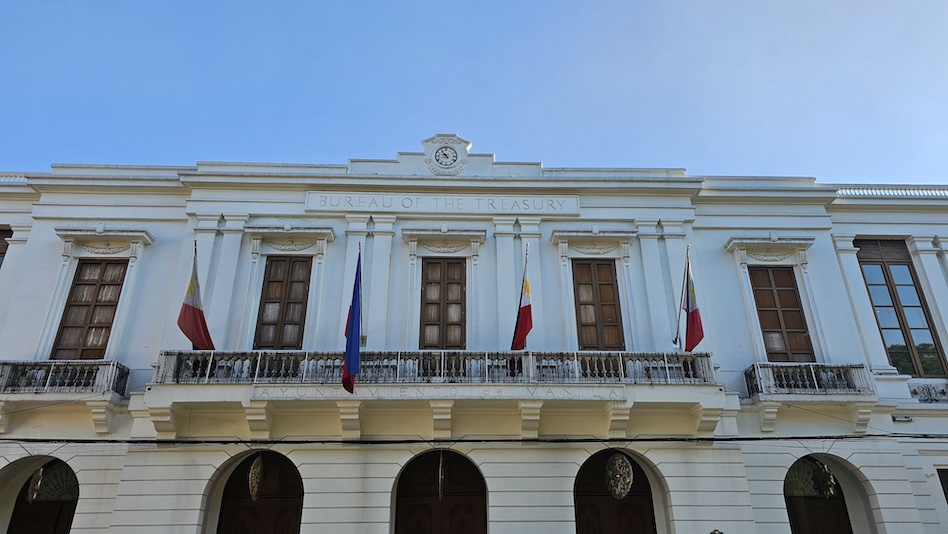




Quarterly Economic Growth Release: More BSP cuts to come
 DOWNLOAD
DOWNLOAD

Monthly Economic Update: Fed catches up
 DOWNLOAD
DOWNLOAD

Inflation Update: Steady and mellow
 DOWNLOAD
DOWNLOAD


Debt-to-GDP ratio unlikely to return to pre-pandemic level

The Philippines’ debt-to-gross domestic product (GDP) ratio is unlikely to return to the pre-pandemic level as debt remains elevated in the medium term, the Bureau of the Treasury (BTr) said.
But the National Government’s (NG) medium-term fiscal consolidation plan will make sure it can continue to invest in its economic priorities while keeping debt obligations sustainable, the BTr added.
“It should also be said that an aggressive return to the pre-pandemic debt-to-GDP ratio of 39.6% is technically and politically infeasible,” BTr said in its annual report released on Nov. 27.
The Treasury said this would require a “more dramatic” fiscal adjustment where the government should have consistent budgetary surpluses.
But this approach would deprive the country of the needed public investments, it added.
The NG’s debt-to-GDP ratio stood at 61.3% at the end of September, higher than the year-earlier 60.2%.
This is still above the 60% threshold deemed by multilateral lenders as manageable for developing economies.
The government seeks to bring this down to 60.6% by the end of 2024, and below 60% by 2028.
Rizal Commercial Banking Corp. Chief Economist Michael L. Ricafort said the government incurs “relatively wider budget deficits” as it requires additional government borrowings that increase the outstanding debt.
“Faster GDP (gross domestic product) growth would also been an essential element to bring down the ratio below the 60% international threshold,” Mr. Ricafort said.
Mr. Ricafort said new tax and fiscal reform measures are needed to further narrow the budget deficit.
As of end-September, the deficit-to-GDP ratio stood at 5.14%, well below the 5.6% target for 2024.
“While debt-to-GDP will remain elevated compared with historical levels, the strong and sustained economic growth of 5.6%, coupled with steady reduction in budgetary deficits and a favorable negative real effective interest rate of 1.3% on the NG’s issuances will drive support for debt sustainability,” the Treasury said.
Foundation for Economic Freedom President Calixto V. Chikiamco said the government is “unlikely” to reduce the debt-to-GDP ratio since “the government has a spending plan to hit the GDP targets.”
“There are more uncertainties presently with Trump in office and launching a global trade war. Therefore, there are more uncertainties in the government reaching its debt-to-GDP ratio. However, if inflation is kept under control, more likely than not, the government can reach its GDP targets,” Mr. Chikiamco said.
Economic managers are targeting 6-7% GDP growth this year and 6.5-7.5% growth in 2025. — A.R.A.Inosante
This article originally appeared on bworldonline.com





 By BusinessWorld
By BusinessWorld